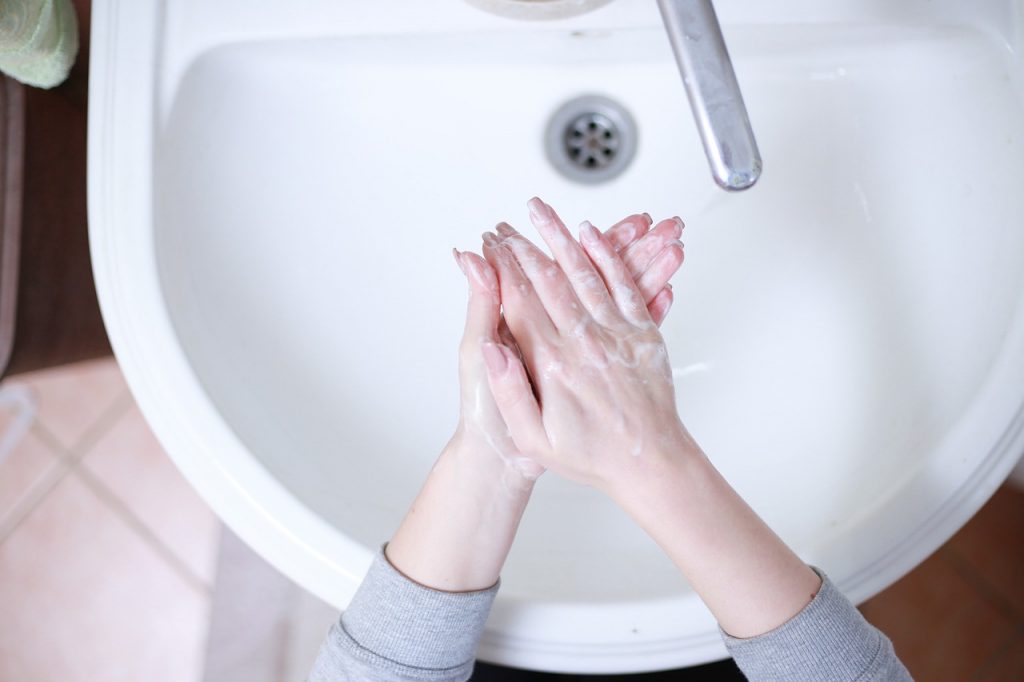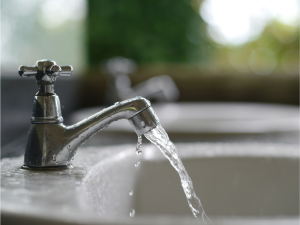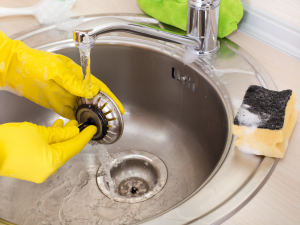A leaking bathroom sink drain is not only unpleasant but also potentially unsafe. The thought of actively wiping water or even having to place a bucket under the sink can be annoying. Not only do leaking bathroom drains cause water wastage but also cause extensive damage to your ceilings, cabinets, and even flooring. To counter this, leaking sink drains should be fixed as soon as they are noticed. Luckily, they are relatively easy to fix. Before we dive into how to fix sink drains, let’s see what could have caused them.
What causes sink drain leaks?
- The nut joining the sink with the drain flange is loose. This can be solved with a simple tightening.
- An uneven rubber washer or gasket. This can only be solved by replacing these with flat and even washers.
- No plumber’s tape was applied between the drain pipe and the threads on the nut during installation.
- The rubber sealing the O-ring or washer is excessively tight.
- An off-centered drain pipe.
How can you identify bathroom sink drains?
Leaking bathroom sink drains may sometimes go unnoticed. To identify these plumbing problems in your bathroom, you need to be aware of:
- Damaged or loose flooring in front of the sink– This is a sign that there is a major leaking bathroom sink drain that has gone unnoticed for a while. And if not addressed, you could see yourself catering for even more expensive damages in your home.
- Water stains in the cabinet– Your sink cabinet should be dry. Water stains are an indication of leaks.
- Puddles in the cabinet beneath the sink– Depending on the intensity of the leaking sink, these puddles are not only annoying but also pose a danger to your health and that of your family.
- An unusual and moldy odor in the sink cabinet– This is an indication of a leaking drain that should be addressed.
How to fix a leaking bathroom sink drain
1. Start by filling the sink bowls
As the water drains, check all joints for any leaks.
2. Check the nut
A loose nut is the most common cause of leaking bathroom sink drains. Also known as a drain nut or slip nut, this is the piece that secures the sink to the drain. Look under the nut carefully for any signs of leaks. Also, test the tightness of the nut. If it moves, then it needs to be retightened. Similarly, if the nut doesn’t budge, it should be replaced as it’s an indication that the rubber gasket is compromised. After tightening the nut, fill the sink and see if the leaks are still persistent.
3. Carefully inspect all drain components
You should be checking for warps, cracks, and any sort of malfunctions. Carefully loosen the drain nut and take everything apart. Assemble all the components and inspect them in the order they come. A flashlight is a great tool to help identify any malfunctions. If any component is damaged, take it to your local hardware for a replacement. Damaged drain components could have broken down due to overuse or even corrosion.
4. Replace seals
If there is zero damage to the drain components, replace the seals. Plumber tape is the best tool since it creates a watertight seal in the drain. However, always ensure that you remove the old seal before applying new sealants. To start with, cut the caulk using a putty knife and remove the entire sealing. To keep the drain tight, apply pressure to the valve and tape. After several revolutions, remove the stray tape.
5. Use a plumber’s putty to seal the top side of the sink drain
Plumber’s putty does not bind to surfaces. However, it plugs the contact between the metal drain flange and the porcelain. For plumbers’ putty to be effective, all surfaces must be clean and dry. Using your hand, roll the putty and wrap it under the drain top and finish by setting everything in the hole of the sink. Use silicone caulk to prevent leaks around the drain hole.
6. Turn the water and confirm that the leak has been sorted
After you have fixed and reassembled the sink, turn on the water and check for leaks. If you still see signs of leaks, then consider reaching out to a qualified plumber. In some cases, you could have solved one cause of a leak and left another unresolved. A plumber will help you identify and solve all leaking bathroom sink drain problems, averting possible accidents and even health risks.
Here are some tips to ensure you efficiently sort the leaking bathroom sink drain.
- Do not overtighten the components– Most people often overtighten the slip nut to stop leaks. While overtightened slip nuts may not cause problems immediately, they can damage the sink and the nut. While the nut should be tightened, it should not be too tight.
- Check the sink neck for potential problems when replacing the rubber gasket– Replacing the rubber gasket with a new one may not be enough to ward off leaks. Ensure that there are no cracks in the sink neck. If unnoticed, these cracks can prevent the gasket from perfectly adhering to the sink neck.
- Only use rubber gaskets– Plastic gaskets may be cheap. However, they are not durable. If available, silicone or rubber gaskets will hold around the thread better.
- Ensure the silicone caulk is cured before running water– If you use silicone caulk to seal the drain, ensure it cures before running water.
- Use Teflon tape to seal threads– Sealing threads after sink installations can often be overlooked. Even with the drain assembled correctly, it still needs to be sealed.
- Apply Teflon tape clockwise– Again, this often goes unmentioned. Wrapping Teflon tape counterclockwise unwinds the tape from the threads which ends up canceling the entire sealing.
- Check all drain parts for damage– It may seem like a lot of work. However, taking the drain apart and checking the drain components for damage ensures that you prevent leaks that would have occurred in the future. Disassembling a drain ensures all defective and worn-out parts are replaced before they cause even more complex problems.
- Test whether the sink drain repair is successful– Even after a successful sink drain repair, some leaks can go unnoticed. Placing newspaper under the sink ensures you identify any leaks, regardless of how minor they are.
Bottomline
Fixing a leaking bathroom sink drain is not complicated. However, if you still notice minor leaks after a drain repair, contact a qualified plumber. The plumber will not only fix the bathroom leaks but can also help you identify other problems within your plumbing system.








